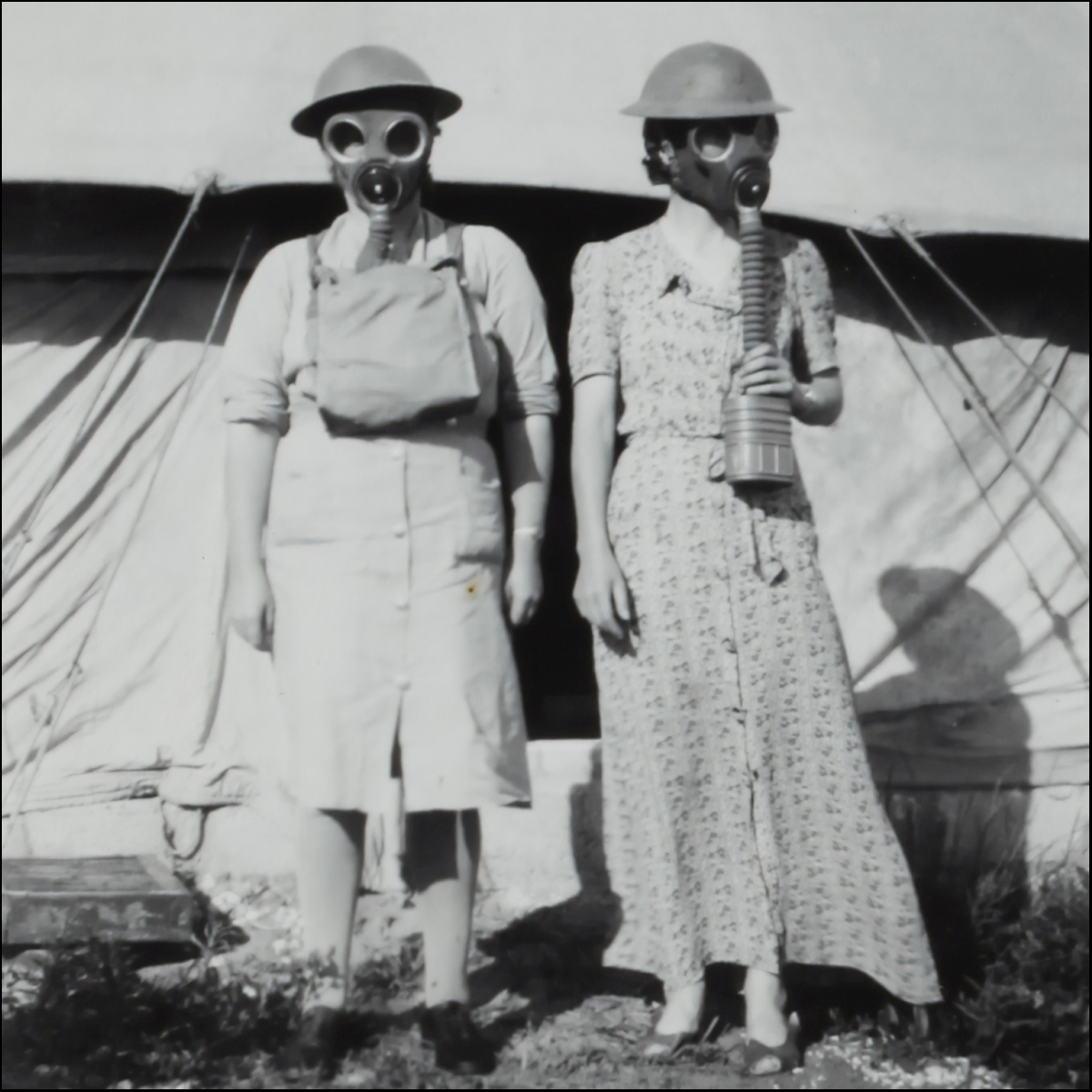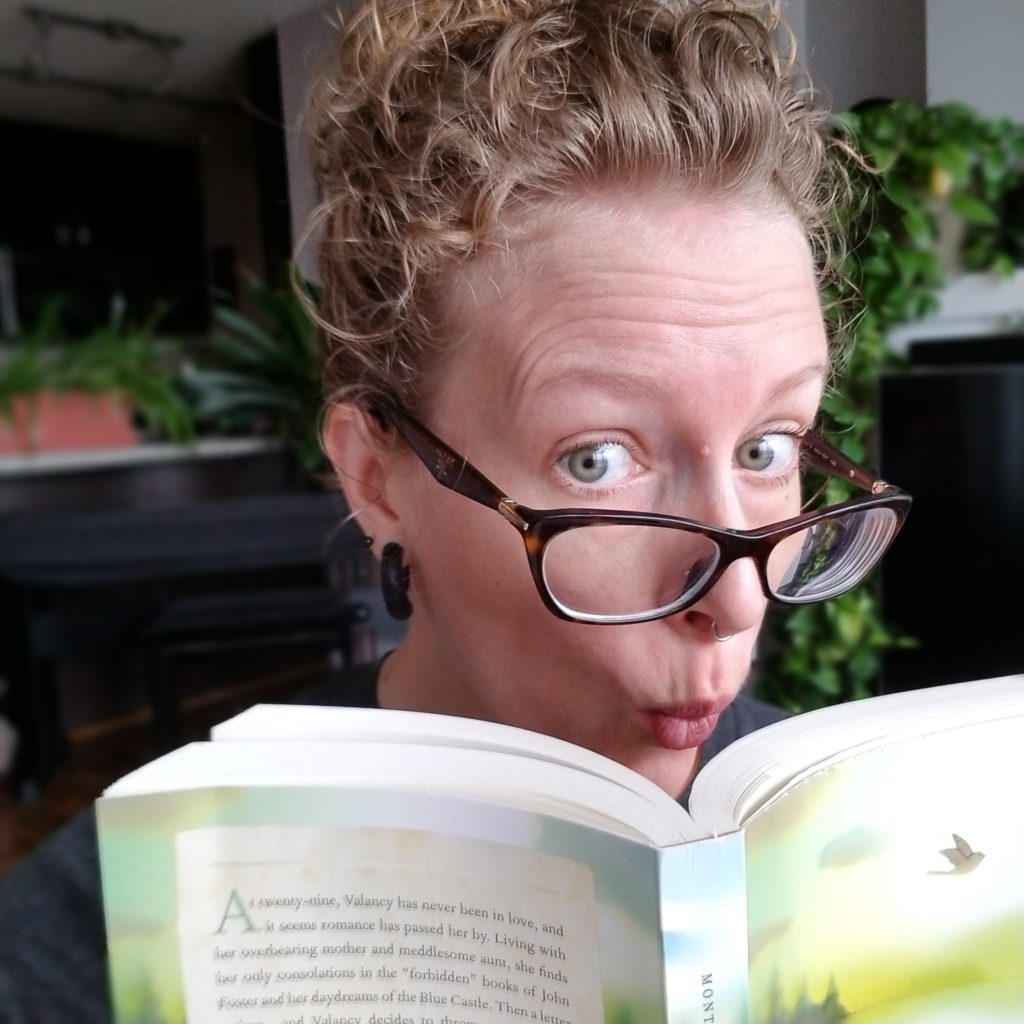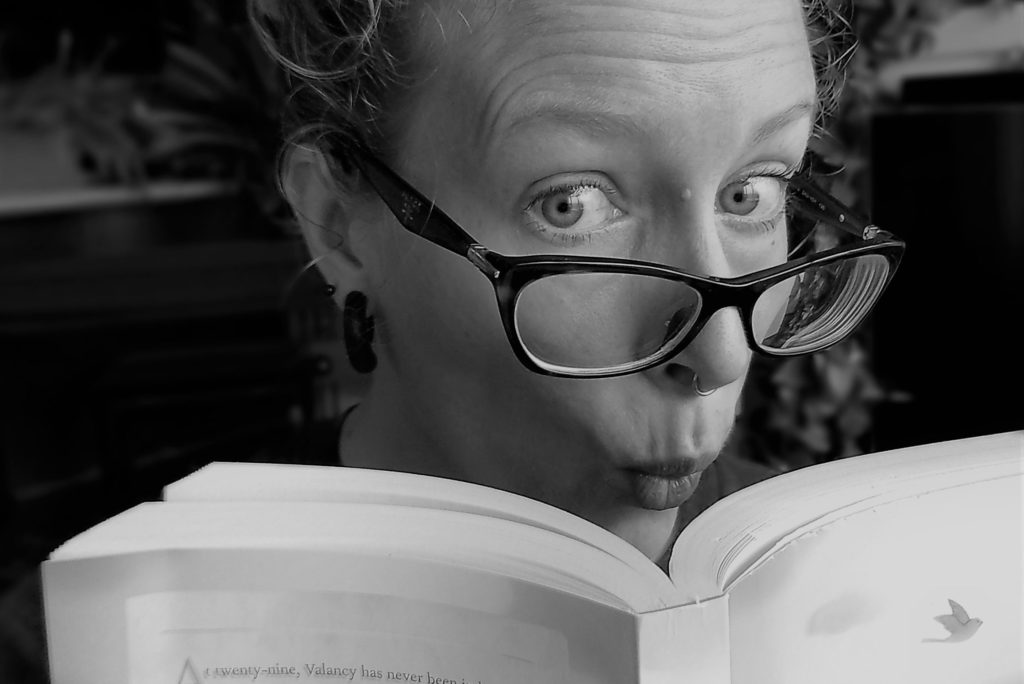
Writing Twitter (and their kin from around social media) are open about their disdain for editing their own work. As someone who comes to writing from editing, I can understand why. Writing is (terrifyingly) unbound from rules. It is careening out of control with every option available—every idea a step toward an infinite number of other ideas. To descend from such freedom (insanity?) into the technical, even delicate work of editing would feel oppressive. How would one even begin to narrow down ideas and follow each to its logical conclusion, meticulously testing, examining, and evaluating outcomes? And after that, genuflecting to endless rules, conventions, and expectations. Not to mention the repetitive and incessant rereading of the same words until they don’t make sense and you hate yourself and doubt everything you’ve ever learned.
In editing, this is the moment I live for. The ache for relief as the self-hatred dissolves into exultation; just when all is lost, perfection is attained. Perfect logic, perfect phrases. Clever and perfectly duplicitous words. The final copy. I realize I may never be able to transform your loathing for self-editing into love, but perhaps I can help you hate it less?
What if instead of a prison, the rules, conventions, and expectations of the revision process were a gauntlet, with freedom on the other side of a series of trials?
Editing: A definition
I suspect that when it comes down to it, writers don’t like editing for at least two reasons. One, because editing and writing are not the same skill, though you have probably been led to believe they are. You can be an exemplary writer, and not be able to identify why you put a comma here but not there. And vice versa: my writing is intelligible, but I edit like a mfing boss.
Reason number two is that from the outside, no one seems to agree on the editing process. I mean, if you look up editing, it is confusing. There are different systems of dividing the work: multiple words used to describe the same processes, single words to describe multiple processes—don’t get me started on regional differences—all the jargon to describe the markup, all the little symbols and grammar rules, plus the ninety-seven uses of the comma. It makes you feel like you have to have an MFA to be a writer.
But if you zoom out beyond the opinions of Strunk and Chicago, editing is working through the story, layer by layer, from the big picture down to the fine details, to arrive at the exact thing you mean to say, while avoiding putting time and effort into ideas that say, well, something else.
So, here’s a map of the gauntlet. For each trial, called “phase” of editing, I’ve outlined what I’m looking for as an editor, some DIY steps you can take to approximate the same process while self-editing, and since each phase can be a vocation in its own right, a few resources for the nerds amongst you who want to deep-dive. Who knows, maybe a few of you will join me on the dark side.
The Phases of Editing
I divide the editing process into five phases, from the broadest to the finest in detail: developmental, structural, stylistic, copy, and the proofread.
It is important not to skip ahead. For example, you don’t want to concern yourself with word choice (a copy-edit decision) when you haven’t decided on the POV (a structure-level decision), because that word might not make it to the copy-editing phase. Likewise, it is best to pick a focus within a phase, such as pacing and work through the entire manuscript before moving on to paragraph transitions, etc. That being said, you can and will need to go backward in the process if you need to, it is just painful and should be reserved for dire circumstances.
Okay? Okay. Let’s go.
Phase I: Developmental Editing
Because developmental editing involves the development of ideas into story elements, I think of it as a bridge between writing and editing. You know you need to work developmentally because, though the logic of the story is clear, the copy feels raw. In other words, it is missing some of the parts that make a story feel complete. Sometimes it needs a beginning, middle, or end. Once in a while, a character or a scene is missing. Often a part of the story just isn’t meeting the reader’s expectations.
As an editor, I’m identifying these missing pieces and working directly with the author to examine solutions and their various implications on the other elements of the story.
Self-Editing
- A plotline: Does something happen—an inciting incident—that alters the character’s day-to-day life so that they must embark on the story? Do the events that follow take the reader step by step toward a logical conclusion?
- Character arcs: Do the characters change? Do they learn or grow? Or do they stay frustratingly stagnant? Whichever blend of these you choose, do your choices tie in with the plotline?
- Which genre(s) fit your story? Search “obligatory scenes” for that genre to learn the reader’s expectations. You can meet them head-on, or you can subvert them, but if they aren’t met, your reader will close the book/magazine.
- Word count: The aim of the drafting process is to exceed your word count so that in the process of removing words, you enrich what remains with more meaning. In the developmental phase, consider the ratio of plotlines/character arcs to words (more complexity generally equals more words).
Resources
- The Story Grid: What Good Editors Know by Shawn Coyne
- Story Grid has several genre-specific articles that describe the reader’s expectations. Search terms like “romance genre obligatory scenes” will get you what you need. The book does not go into this level of detail.
- Developmental Editing: A Handbook for Freelancers, Authors, and Publishers by Scott Norton
This book is geared toward editing non-fiction, but the principles are the same. It is very dense to read cover to cover.
Phase II: Structural Editing
Once all of the pieces of your story are present and accounted for, the structural (or substantive)* edit is the phase where you decide how they are organized. The organization of story elements creates tension and compels the reader to continue to the next sentence. The structural edit is all about the “what” of the story. In a compelling story, the reader’s attention follows a few simple questions: What is happening here? What is going to happen next? What just happened?! And we hope they are closely followed up by: Wow, I need to read that again.
As an editor, I am putting myself in the reader’s shoes and imagining what will happen next. After each event, I’m making note of whether your choice falls below, meets, or exceeds my expectations.
Self-Editing
- Which structure does your story follow most closely? Three Act, Freytag’s Pyramid, Hero’s Journey, etc.
- How have you sequenced the events? Is your timeline linear or non-linear? Do these choices support your plotline?
- Which point of view (POV) are you using and why? Who is your perspective character and why?
- Word count: Depending on your idea, different plot structures, timelines, and POVs will take up more words than others. If you are going way over your word count, one of these may be the problem.
*Some people combine the developmental and the structural phases and call them by one or the other, making only four stages of editing. This is not to be confused with when an editor combines two phases into a single edit because the story only needs a bit of tweaking in a certain phase.
Phase III: Stylistic Editing
Now that you have a sequence of events, your next step is the stylistic edit (also called the line edit). This phase can be summed up as the “how” of the story: How do you convey your message and themes to the reader? How do you bring your characters to life? How does your voice as a writer engage your readers? Your writing style leaves the reader with an impression of the world you’ve created, but also of yourself as an author.
In this phase of editing, your task is to ensure that your style and voice are consistent throughout the story. As an editor, I spend a lot of time reading out loud and imagining what different readers might hear.
Self-Editing
- What message are you hoping to send to your reader? Does the development of tone, division of word count*, and your choices of themes and literary devices convey this message?
- Look at how the content is delivered (exposition, action, dialogue). Does the balance between the three support the message you are intending for your readers? How do you use each to vary the pacing?
- How do you create intimacy between the characters and the reader? This has a lot to do with POV and whether/how you use a narrator as an interface.
- Are your paragraphs structured to help the reader transition from one idea to the next?
* Use style to your advantage when considering word count. Can you use a literary device like a foil character rather than paragraphs of exposition to explore the moral choices of your main character?
Resources
- Dialogue by Robert McKee
- The Emotion Thesaurus: A Writer’s Guide to Character Expression by Angela Ackerman and Becca Puglisi
Phase IV: Copy Editing
The developmental, structural, and stylistic phases of the editing process are about turning your draft into an internally consistent story that clearly expresses your message. The copy editing phase is focused on the linguistic expectations of the reader (and publisher): continuity, grammar, sentence mechanics, usage, etc. As an editor, using a style guide and dictionary, I’m reading every word of every sentence to mark up anything that distracts me, trips me up, or confuses me.
Self-Editing
- Look for errors in continuity: POV, processes, rules, dates, names, spellings, etc.
- Learn your punctuation marks and how they impact the meaning of your phrase (e.g. a colon initiates a list but it can also signify a comparison, or that the second clause is an expansion of the ideas in the first).
- Make sure sentence mechanics are easy to understand and scannable. Read it out loud. Does the direction of your thought feel shaky? Do you trip on a word or phrase?
- Word count: Choose your words intentionally. During the drafting process, you must do a certain amount of talking around an idea to articulate your point. This is your last chance to omit redundancies and choose the precise word.
Resources
- Choose the Right Word: A Contemporary Guide to Selecting the Precise Word for Every Situation
by S I Hayakawa
This book defines the difference between 6000 commonly used synonyms—I only wish it covered every synonym in the dictionary. - Complete Punctuation: Novice to Pro | Udemy
While I was deciding if I wanted to be an editor, I experimented with some cheaper courses (careful, these are the gateway to the dark side). I still refer back to my notes on this one. - Grammar Girl | Mignon Fogarty
Fogarty is a wealth of interesting grammar tips and tricks. Check out her podcast and social media accounts.
Phase V: Proofreading
Proofreading is the final phase of editing before your piece goes to print, and serves as a bridge between the editing and design processes. In the days of the printing press, the proofreader marked any errors that crept in during the typesetting process. As an editor today, I take your final copy and compare it, letter by letter, punctuation mark by punctuation mark, to the proof (preview of what is to be submitted to the publisher), to make sure there are no errors. I am looking for ways that the text needs to be accommodated in the design, making sure that the titles, headings, captions, page numbers, spacing, etc. are all correct, but there should be no copy editing changes at this point.
Self-Editing
- Read your piece backward, character (the unit of text, not the person) by character, until you complete the word, then the sentence. Then, read the sentence out loud in the silly accent of your choice. I say “Approved!” to keep it fun, but that’s optional. Do this until you reach the title.
- Check for consistency: typeface, font, and options including size, weight, and style (no italicized punctuation!); space between letters and words, titles, body paragraphs, and sections; cross references and indexes. Anything weirder than regular roman body font should be double-checked.
- Look at your pages from a different vantage point to check for visual anomalies, like spaces that align and create rivers through the text, multiple hyphens down the margin (ladders), single word lines, etc.: squint your eyes, scroll through them from across the room, look at them upside down.
- Use a text-to-speech program to read the text aloud while you read along with your eyeballs. The more monotone and incapable of expressing inflection the AI, the better.
Approved!
If you’ve made it through the final phase unscathed and you’re happy with your story, you have done all you can. It’s time to . . . let someone else read it.
Of course, you can go straight from the proofread to hitting the submit button but every story will benefit from testing it out on a writing group, having a fellow writer take a look at it, or having your editor do a sanity check. (This blog post alone has been through testing with my coaching clients, two writing groups, and my editor, and I will still publish it and find errors to tweak). In fact, anytime you’re stuck, and after every phase, it doesn’t hurt to hand your writing off to another set of eyes.
Then, once you’re satisfied that your readers approve, it’s time: press the big button and celebrate!




